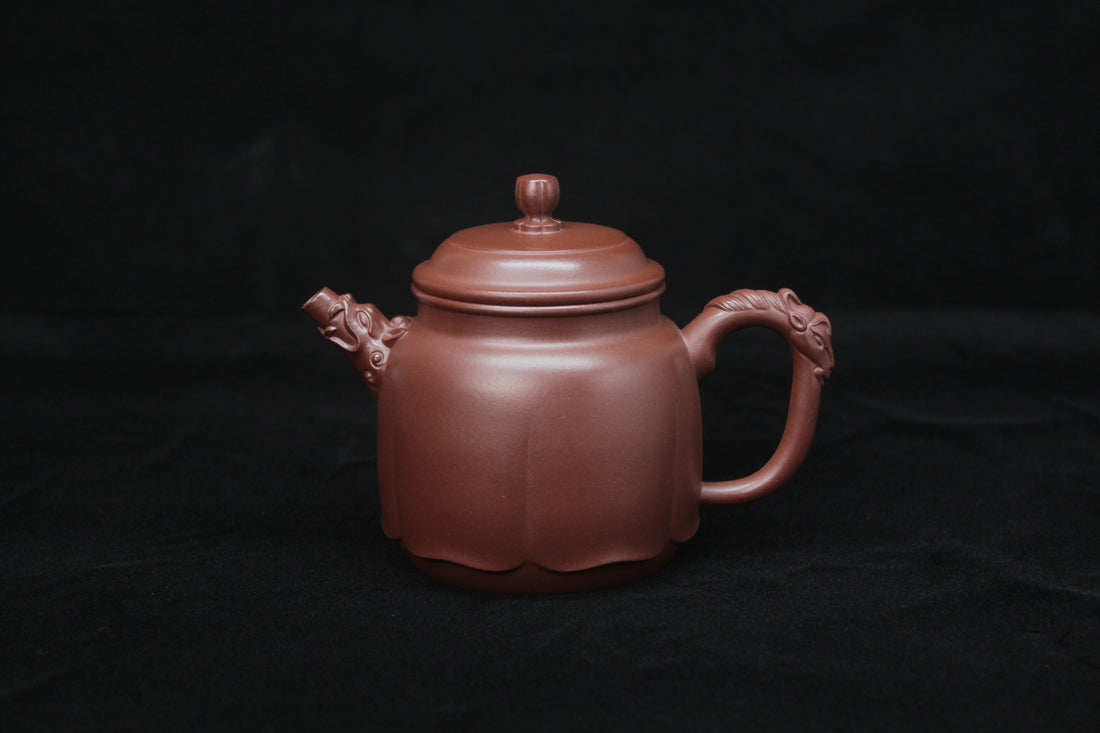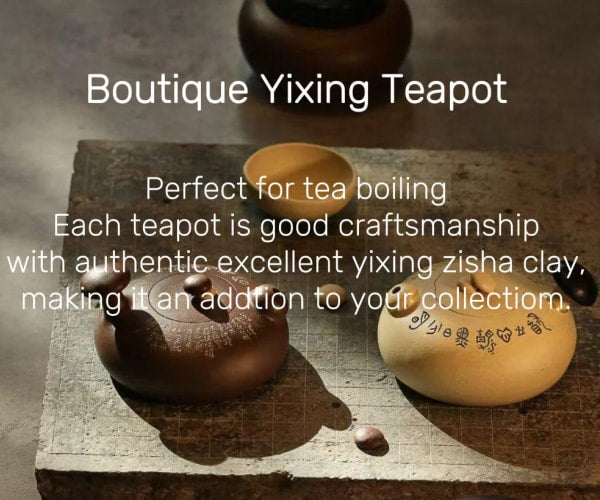Characteristics of Yixing teapot
Nestled in the misty hills of Jiangsu Province, China, lies the city of Yixing (pronounced “yee-shing”), renowned for producing one of the world’s most cherished tea treasures: Yixing zisha teapots. These unassuming clay vessels are far more than mere tools for brewing tea—they are a harmonious blend of nature, artistry, and tradition. Let’s unravel why Yixing teapots have captivated tea lovers and collectors for centuries.
1. The Magic of Zisha Clay: Nature’s Gift
At the heart of every Yixing teapot is zisha clay, a unique mineral-rich earth found only in the Yixing region. Composed of kaolin, quartz, mica, and iron oxides, this clay forms a dual-porosity structure during firing. This microscopic labyrinth of pores allows the teapot to “breathe,” balancing air permeability and heat retention. Over time, the clay absorbs the essence of tea, developing a rich patina that enhances flavor and aroma—a process cherished by tea connoisseurs as “seasoning” the pot.

2. Craftsmanship: Where Skill Meets Soul
Creating a Yixing teapot is a labor of devotion. Artisans, often trained over decades, follow a meticulous process:
-
Clay selection: Only the finest zisha clay is handpicked and aged for years to achieve optimal texture.
-
Hand-forming: Using traditional tools like bamboo paddles and wooden molds, each teapot is shaped without a potter’s wheel, preserving the clay’s natural integrity.
-
Carving and detailing: Intricate patterns, calligraphy, or landscapes are often etched into the surface, turning the pot into a canvas.
-
Firing: Kilns heated to 1,100–1,200°C transform the raw clay into a durable yet delicate masterpiece.
No two Yixing teapots are identical—each bears the subtle imprint of its maker’s hands and heart.

3. A Symphony of Art and Culture
Yixing teapots are vessels of storytelling. During the Ming and Qing dynasties, scholars and poets collaborated with artisans to adorn teapots with paintings, poetry, or philosophical motifs. These designs reflect China’s literary and artistic heritage, turning functional objects into heirlooms of cultural identity. Even today, masterpieces by legendary craftsmen like Shi Dabin or Chen Mingyuan are celebrated as national treasures.

4. Health and Sustainability: Brewing with Benefits
Beyond aesthetics, Yixing teapots offer practical virtues:
-
Natural insulation: The clay’s thermal properties keep tea warm longer without scalding the leaves.
-
Flavor enhancement: The porous structure mellows harsh tannins and harmonizes tea’s nuances over repeated use.
-
Eco-friendly durability: Unlike glazed ceramics, zisha clay requires no chemical coatings. A well-loved teapot develops a tea patina (茶锈) inside, believed to have natural antibacterial properties.

5. Collectibility: An Investment in Timelessness
High-quality Yixing teapots are appreciating assets. Factors like rarity, craftsmanship, and historical provenance determine their value. Antique pots from revered masters can fetch millions at auctions, while contemporary works by certified artisans are sought after by global collectors. Yet, their true worth lies in their ability to transcend time—bridging past and present with every pour.
Conclusion: More Than a Teapot
A Yixing zisha teapot is not just a tool; it’s a dialogue between earth and fire, artist and drinker, tradition and daily ritual. Whether you’re a tea enthusiast, an art lover, or a sustainability advocate, owning a Yixing teapot means holding a piece of living history—one that grows more beautiful with every brew.
So, the next time you sip tea from a Yixing pot, remember: you’re tasting centuries of craftsmanship, culture, and the quiet magic of zisha clay.



